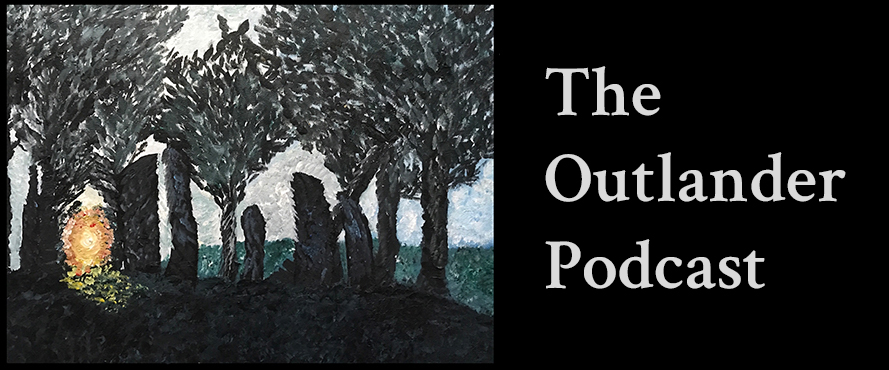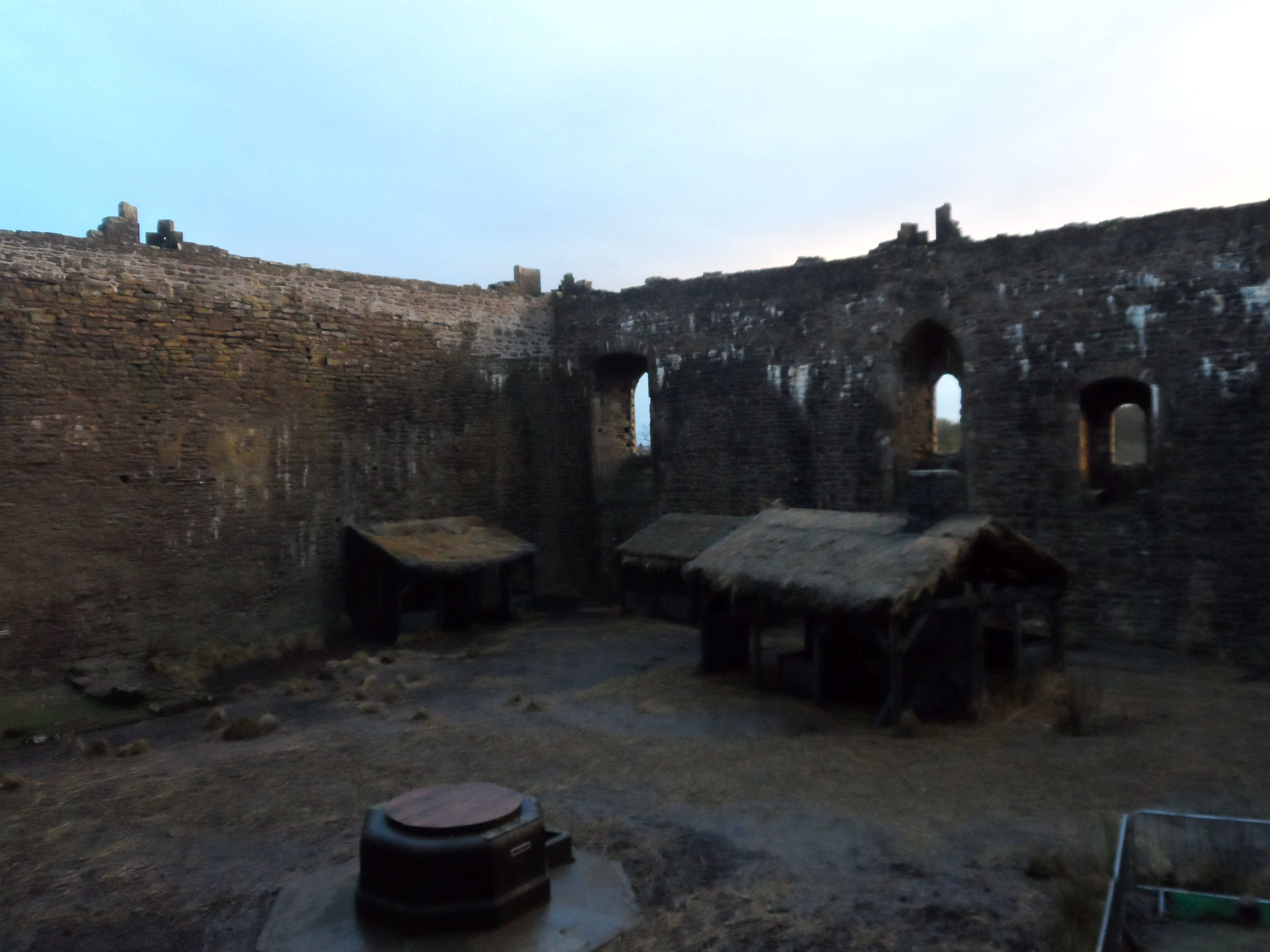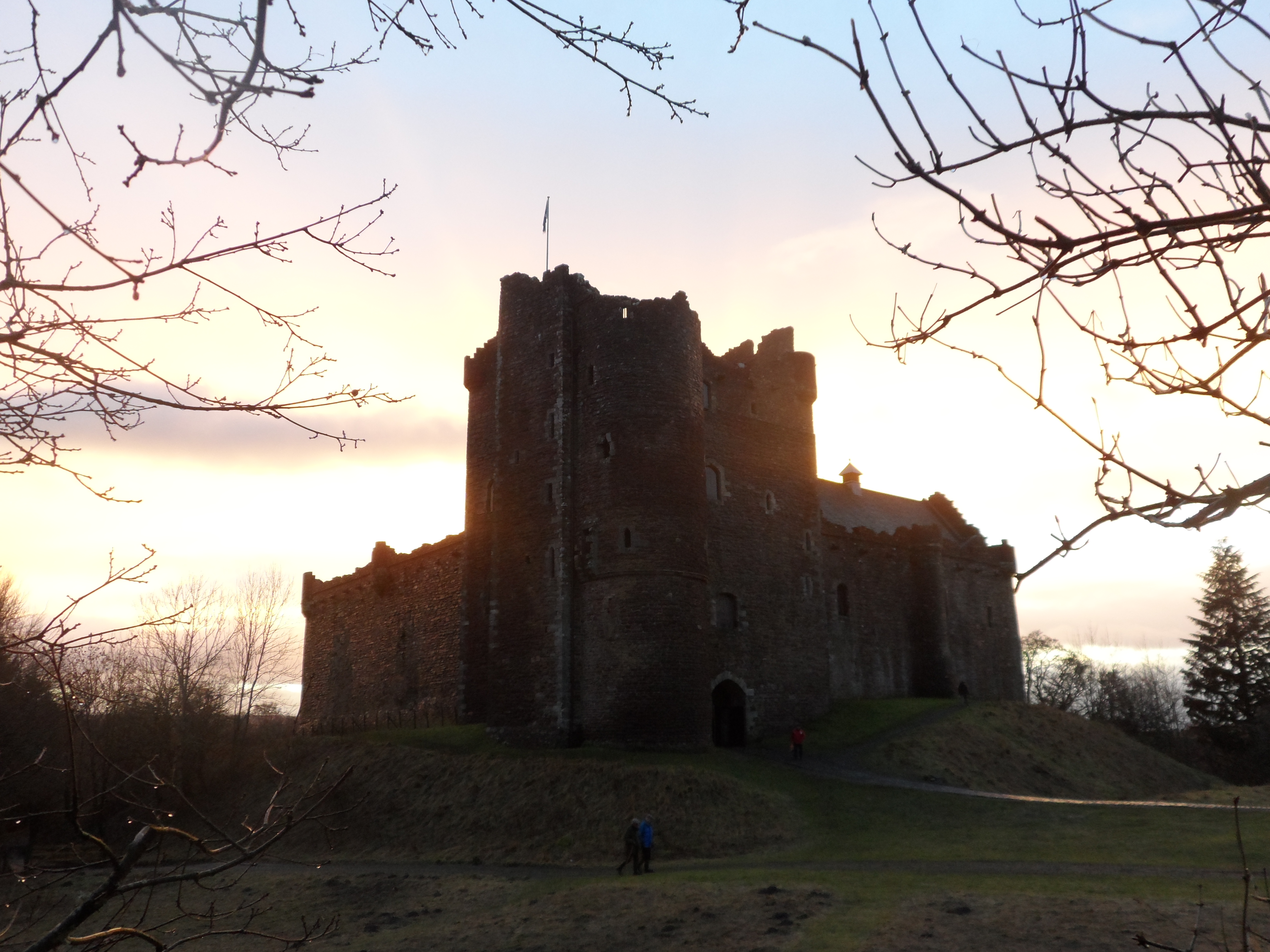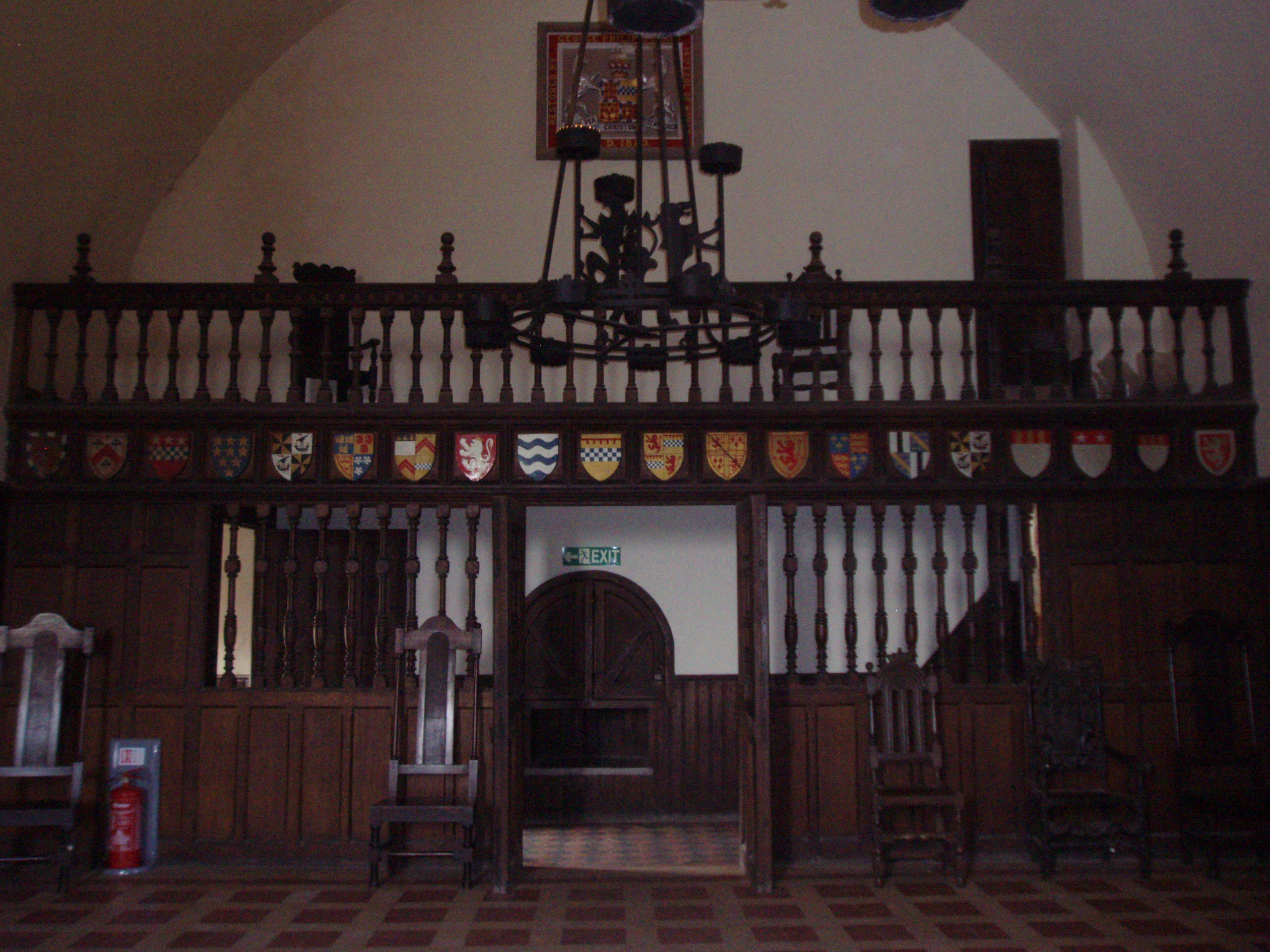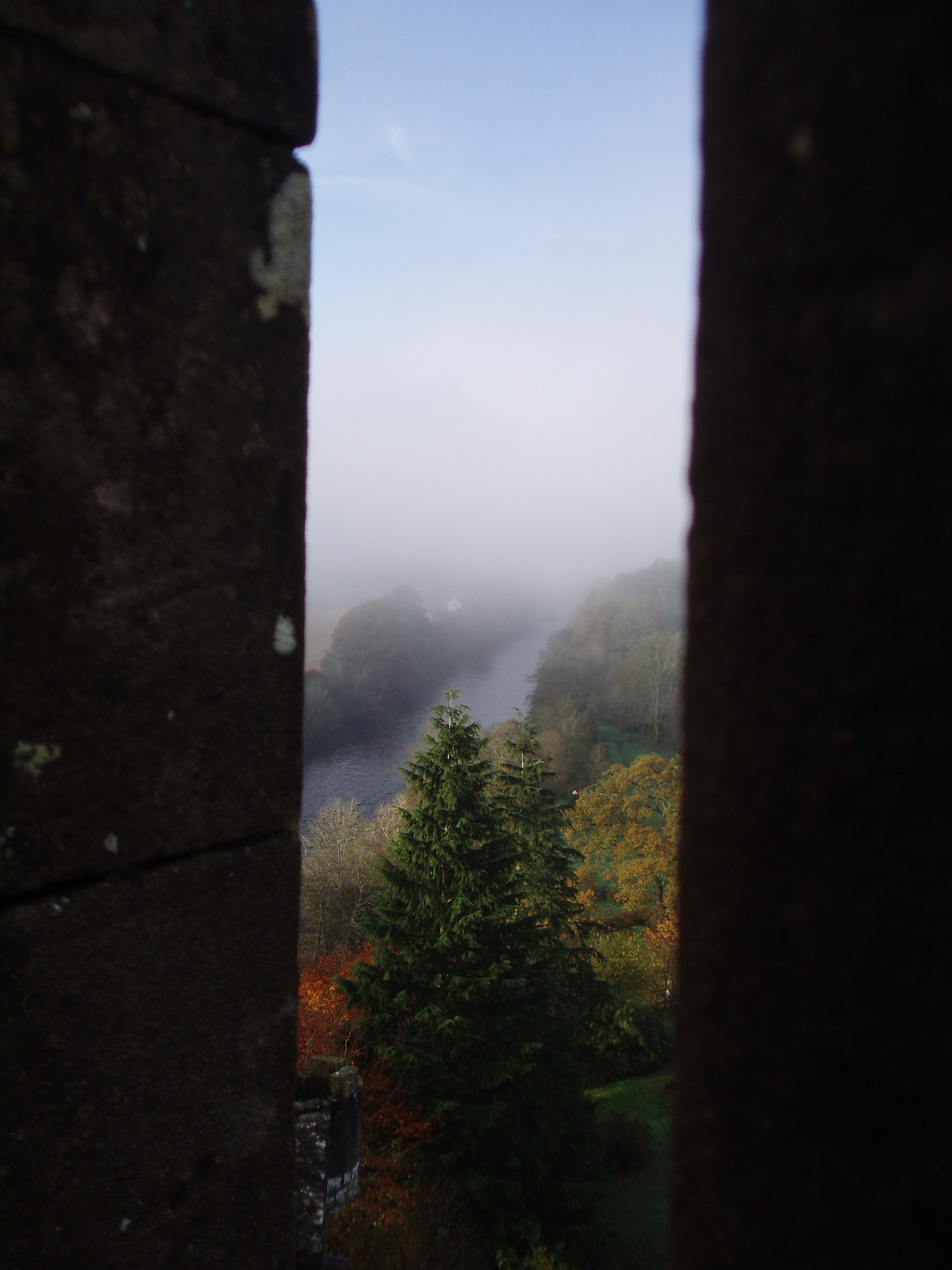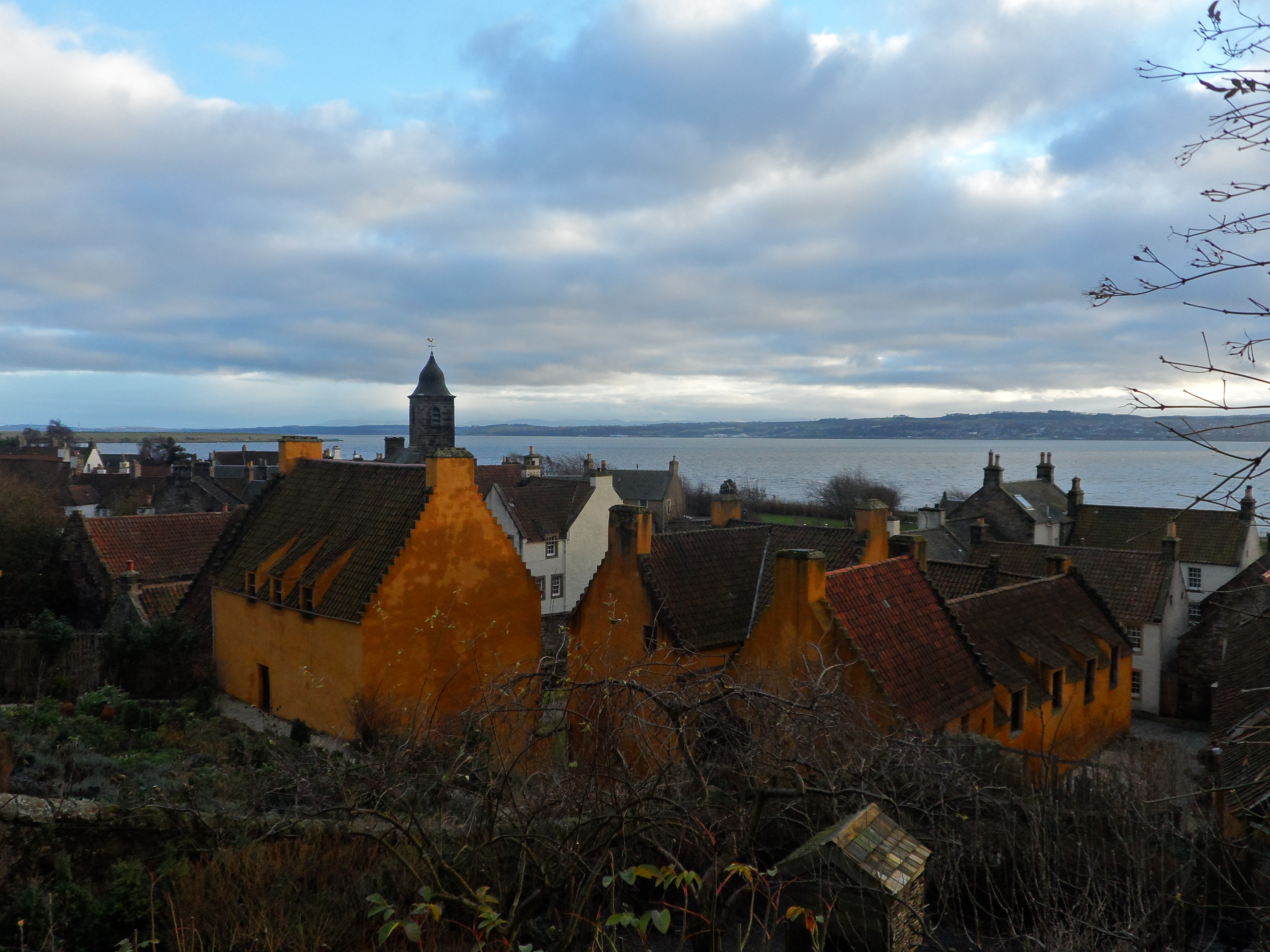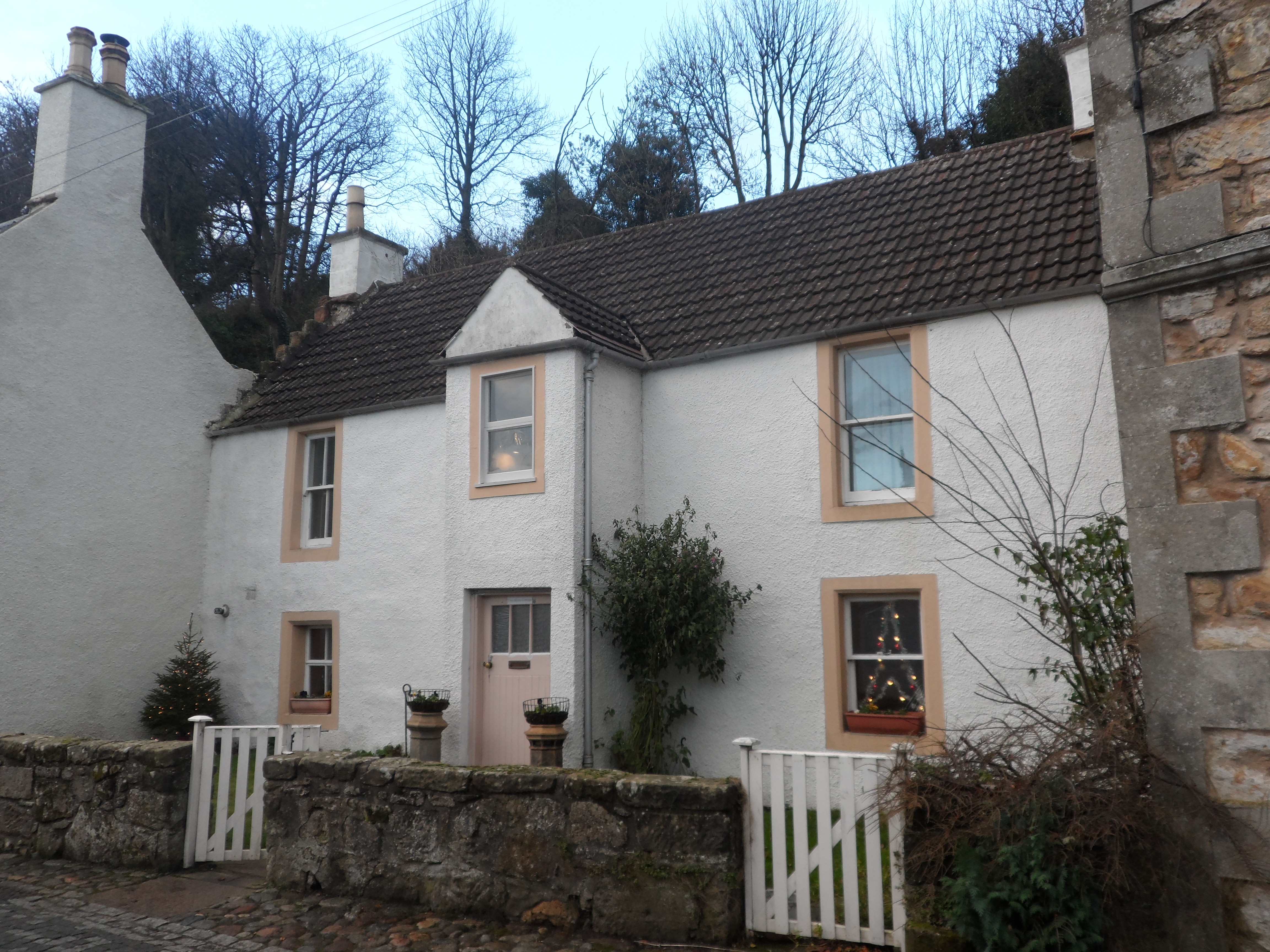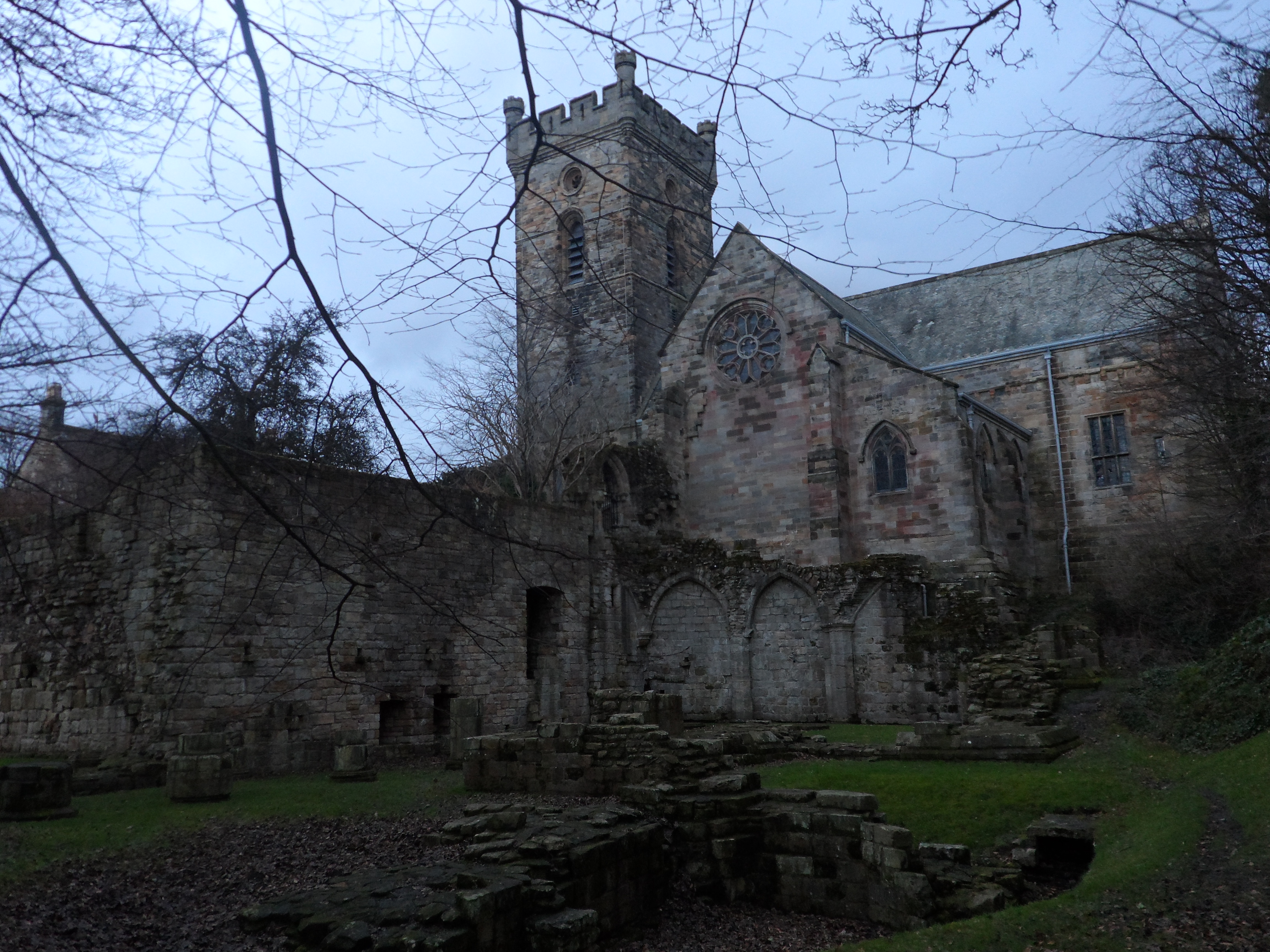In this episode, we discuss recent announcements, which led to, let’s say, interesting conversation. (Summer gives Starz some suggestions for a Pocket Jamie #reboot.) We chat with guest Dave Weinczok about his work with National Trust for Scotland, The Books, and standing stones.
Outlander Territory: An Exploration and History of the Real Places Behind the Filming of the Starz Original Series
By David Weinczok – amateur historian, aspiring author of a book on Scottish castles, and ‘Battle Master’ at the Bannockburn Heritage Centre. He would love to hear from you, so please get in touch at [email protected]!
At the Highlands’ edge in Doune Castle
The first location is Doune Castle, located in the village of Doune on the Highand line in Perthshire, central Scotland. My visit on December 30th was animated by the presence of some of the prop structures from the Outlander filming set in the castle’s courtyard, and this enhanced the already incredible feeling of late medieval authenticity that the castle is
so renowned for. During historical use the courtyard would have been a hive of activity, with numerous structures such as stables, a brewhouse, guardhouse and smithy, and it was a rare treat to get a sense of this. Look out for many scenes set at Castle Leoch taking place within these walls! Diana Gabaldon’s description of Castle Leoch bears a striking physical resemblance to Castle Leod in the northern Highlands, and Leod is indeed a Mackenzie stronghold. Doune, however, proved a more amendable location for filming, which saw the castle closed to the public during November 2013. Now, down to the history…
Fortified for over 2,000 years, ‘Doune’ is a corruption of ‘dun’ or ‘doon’, meaning an ancient stronghold. A Roman fort left over from Agricola’s invasion of Scotland (or Caledonia, as the Romans called it) in 79 CE lies to the north of the present castle, and there is increasingly evidence for the existence of a stone structure prior to its main phase of development under Robert Stewart, 1st Duke of Albany, in the 1380s.
Doune is a formidable place – to enter, you must pass through a 40-foot passageway defended by an iron gate, as well as murder holes through which defenders could rain arrows and boiling oil onto any would-be invaders. The main keep of the castle even today stands at a towering 95 feet, and would have been even taller during its occupation by Albany and its later royal lords. Standing at the confluence of two roads into the Highlands – one from Glasgow and the other from Edinburgh – Doune serves as a solid stone reinforcement to the famous crossing eight miles away at Stirling, dubbed a ‘brooch clasping the Highlands and Lowlands together’. Hence, any force wishing to invade the Highlands or Lowlands was made to pass through these lands.
Its imposing nature as a defensive structure is matched by its role in the intrigue and politics of late medieval and Jacobite-era Scotland. Albany was the de facto ruler of Scotland from 1388 until his death in 1420, serving variously as Guardian and Governor of Scotland during the ineffectual rule of kings Robert II and Robert III. Such power, however, can bring out the worst in the best of us, as well as rouse the ire of those aspiring to it. Despite being described by contemporaries as “prudent, brave, and lovable of countenance”, Albany played an uncertain role in the death of king Robert III’s son David, who had been building his own power base through the 1390s and had become Duke of Rothesay in the same ceremony that made Robert the Duke of Albany (‘Albany’ derives from Alba, the name of the historic kingdom between the Forth of Forth and Moray that gave birth to the Kingdom of Scotland in the late 9th century CE and of which the lands of Doune were a part; the title was therefore highly symbolic). He and several other nobles engineered David’s arrest in 1401, and within a year David was dead, some say of dysentery and neglect, in Albany’s stronghold of Falkland. This act would spell doom for Albany’s family, for it was the murdered David’s brother, James, who would become King James I in 1424. Albany’s son Murdoch, as well as Murdoch’s two sons and father-in-law, were all executed by a vengeful and suspicious James, who would allow no opportunity for the lords of Albany to regain their stranglehold over the realm. Doune Castle thereafter passed into control of the crown, who used it as a royal hunting lodge and source of secure income conveniently close to the power centre of Stirling.
Doune, like much of the country, was swept up in the brief but considerable success of the Jacobite Rising of 1745-46, the third and final such Rising (the first being in 1688-89 in response to William of Orange’s seizing of the British crown, and the second in 1719 in support of the ‘Old Pretender’ James Francis Edward Stewart). The Risings pitted Highlands against Lowlands, Catholics against Protestants, clans against clans and fathers against sons in a complex and bloody struggle between believers in the old order – the Stewart kings and their absolutist form of monarchy – and supporters of the new Union between Scotland and England headed by the ‘usurper’ Hanoverian (German) monarchs. Neither can make a strong claim to virtue, and to select one or the other as the protagonists is an exercise in futility; what they shared in spades, however, was an intolerance of each other’s politics, faith and right to existence. Tragically for the peoples of Scotland and England, this meant bloodshed at a level not seen since the Scottish Wars of Independence in the 1300s.
Doune Castle was seized in 1745 in the name of the Jacobite leader and intended sovereign, Charles Edward Stewart, better know to us as ‘Bonnie’ Prince Charlie for his dashing looks and demeanour. After the Jacobite victory at the Battle of Falkirk in 1746 Doune was used as a prison for captured royalists, among whom was future President of Princeton College and signatory to the American Declaration of Independence, John Witherspoon, who had attended the battle out of ‘curiosity’.
Following the calamitous end of the third Jacobite Rising with the killing field of Culloden, Doune Castle fell into ruin. It became very popular with tourists into the late 18th and 19th centuries, undergoing extensive restoration work in the 1880s The castle has since been used as a filming location for Monty Python and the Holy Grail, the premier episode of Game of Thrones and, of course, Outlander.
A step back in time at the Royal Burgh of Culross
Walking along the deeply cobbled streets of the village of Culross, I had to wonder if I had joined Claire Randall in a mysterious bout of time-travel. This effect is wholly deliberate; The National Trust for Scotland acquired over 30 of the town’s buildings in the 1930s, putting in place much-needed restoration work and brining town gems such as the ‘Palace’ and Study back to their 17th century resplendence.
Culross is a Royal Burgh, which means that it was given license by the crown to trade internationally, alongside much larger Scottish settlements such as Edinburgh and Aberdeen. This now-quiet tourist draw was once one of Scotland’s most important trading ports, producing vast amounts of salt and coal and reputedly hosting 170 ships off its shore at any given time during the late 16th through 17th centuries. It was home to one of (if not the) world’s first offshore coal mines, with a tunnel stretching for over a mile under the Firth of Forth. When king James VI visited Culross, he got a fright when, invited to tour the mine by his host Sir George Bruce, he found himself surrounded by water at the top of one of the shafts which allowed for coal to be loaded onto ships far out into the Firth. In his panic, he declared that Sir George was making a treasonous attempt on his life! Only when Sir George pointed out a rowing boat meant to take the king back ashore did James silence his accusations and avail of the taxi back to dry land. The mine was destroyed in a terrible storm in 1625.
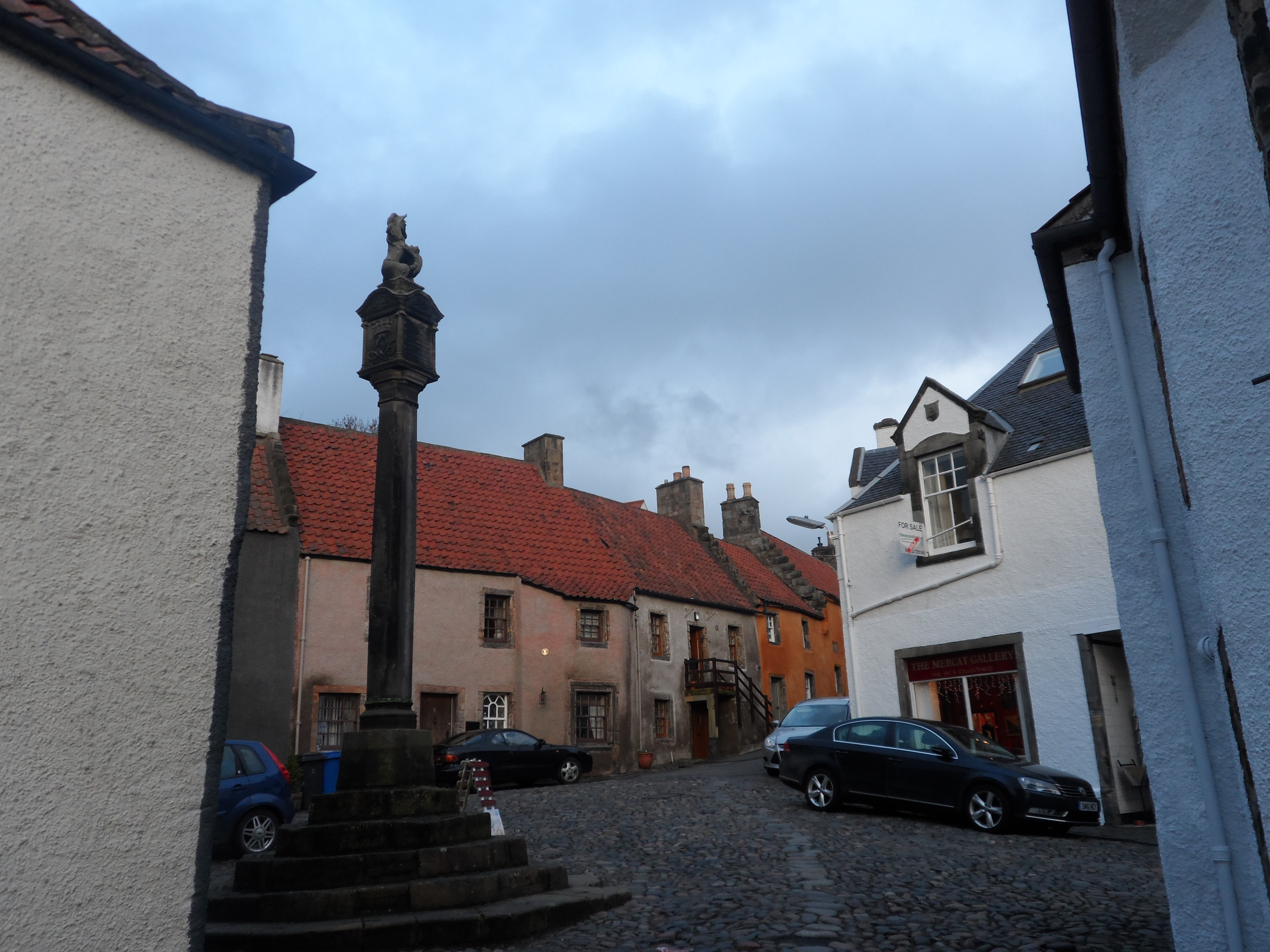
The Mercat Cross square, used for 4 days of filming, with white Mercat Gallery that doubled as the village pub during filming
Much of the Outlander action takes place at the town’s Mercat Cross, a relative newcomer being built in 1902. The cross itself is surrounded by 17th century buildings, all of which were painted grey during filming – some still remain so, while others have gone back to their original creamy white. The Mercat Gallery, a very inviting art hub in the square, had its exterior converted to look like a pub. Another set for the series was the quaint ‘Two Shirts Cottage’, in which many indoor scenes were shot. Unfortunately the owner was out during my visit and I therefore couldn’t get inside for a peek.
It was Sir George who was largely responsible for the thriving coal and salt industries at Culross, as well as for the construction of the yellow Palace. A descendent of Robert the Bruce, who won Scotland’s independence (for a time) through his actions during his reign as King of Scots (1306-29), Sir George decorated his miniature palace with an ornate painted ceiling and equipped it with a garden which is still in bloom today. In it can be found a patch of deadly nightshade, a plant infamous for its poisonous properties – according to some tales, king Duncan I (1034-40) used ale and bread laced with nightshade to induce an entire Danish army to pass out, then slew them with spears and swords as they lay incapacitated.
Culross is topped with a fantastic Parish church, founded in 1632 and built upon the remains of a Cistercian abbey established in 1217 on land gifted by Malcolm, 7th Earl of Fife during the reign of king Alexander II. Culross is home to a striking legend – during the 6th century, the daughter of a Pictish king (the Picts would combine with the Gaels, through warfare and acculturation, to form the Kingdom of Scotland) was disowned by her father over her choice of lover, with whom she was pregnant. Cruelly cast away to sea in a rickety boat, she drifted to Culross where she was rescued by the monks of the abbey. There she gave birth to a boy, named Kentigern, who was cared for by the monks and became a brother upon adulthood. This boy, now grown, would become St Mungo, a supposed miracle worker, patron saint of the city of Glasgow, and one of Scotland’s most beloved religious figures.
Culross has not only retained its historic atmosphere, but also its liveliness; I arrived at 2pm on a Thursday only to find the local pub, The Red Lion, hosting a stomping blues party with not a spare seat in sight. While its economic boom ended by 1750, with its seashell-lined streets, multitude of centuries-old buildings and unmistakably charming character Culross continues to stand out as one of Scotland’s most important heritage sites. It really is no wonder that Outlander’s producers chose to shoot here – a visitor need not even use their imagination to place themselves centuries into Scotland’s remarkable past, and into the arms of Jamie Fraser.
